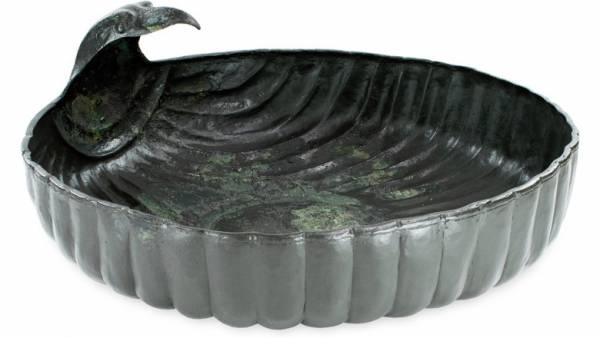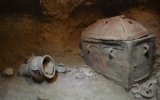In the Netherlands, found a bribe the Romans to the German leader
Archaeologists found the burial in the South-West of the Netherlands the bronze bowl for washing, presumably taken in the III—IV centuries of our era.
Upstairs
According to the website DutchNews.nl probably the Romans introduced it as a diplomatic gift or a bribe to the leader of one of the Germanic tribes. According to researchers who found it, this is the only found so far the Cup is decorated with the head of an eagle.
News Greek farmer accidentally discovered an ancient tomb
Greek farmer accidentally discovered an ancient tomb
Southern Netherlands, more than 450 years was a Roman province. It was conquered by Julius Caesar during the Gallic wars. The boundary between the Roman province of lower Germany and the territories of the Germanic tribes took place on the river Rhine. The Romans had with the Germanic tribes of the world, individual leaders have recognized the Roman Empire suzerain, but to conquer the lands North of the Rhine, the Romans failed.
Recently, archaeologists found in the city of Rijnsburg in the province of South Holland burial, allegedly the IV century with the cremated remains of three people — two men and women. In Roman times this territory was part of the province of lower Germany. The burial was discovered fragments of molten glass and bronze, and two combs made of deer antlers. The most interesting were fragments of a bronze bowl for washing, adorned the head of an eagle. According to archaeologists, it was made about 50 years before the time of burial.
It was made in a specialized workshop in another part of the Roman Empire. Similar workshops in the era of the Late Roman Empire were in Italy, for example, in Capua.Rene Protargola
The owner of the bowl could be a high ranking Roman General who commanded the troops in Lower Germany. However, cremated remains likely belonged to the Romans, who burned the dead, and local residents. This is also evidenced by combs made of deer antlers. Such artifacts in the fourth century did the Northern Germanic tribes.
Restored and rebuilt from the fragments of the bowl had a diameter of about 40 centimeters. Judging by the lack of traces of wear, used it a little. Presumably, the bowl was made by order of a Roman General, it was used for washing hands at important receptions. Archaeologists suggest that the Romans brought the artifact to the North as a diplomatic gift or bribe to someone from the German leaders.